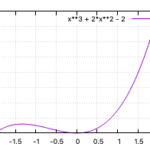endswith を使う。
例
str1 = "こんにちは"
result1 = str1.endswith("は")
result2 = str1.endswith("わ")
print(result1)
print(result2)
結果
True False
雑記
投稿日:
endswith を使う。
str1 = "こんにちは"
result1 = str1.endswith("は")
result2 = str1.endswith("わ")
print(result1)
print(result2)
True False
執筆者:seyanen
関連記事

python3 で、文字列を一文字ずつのリストに変換する方法
string を list() で変換すれば良い。 例 str1 = ‘Good morning.’ list1 = list(str1) print(list1) 結果 [‘G’, ‘o’, ‘o’ …

\hyperref パッケージを使って次のように書く。 例 \usepackage{hyperref} \begin{document} \href{mailto:taro@example.co.jp …

python3 でクラスの初期化を __init__ で行う
python でクラスのオブジェクトを生成したとき、__init__ メソッドが呼び出される(コンストラクタ)__init__ の引数には自身(self)を指定することが通例。一方、オブジェクト破棄の …

2023/01/18
matplotlib のグラフ作成と gnuplot との対応 比較

2022/10/14
pythonで配列(リスト)の、ある要素がわかっているときにその次の要素を取得する方法。